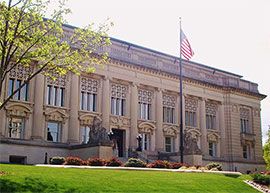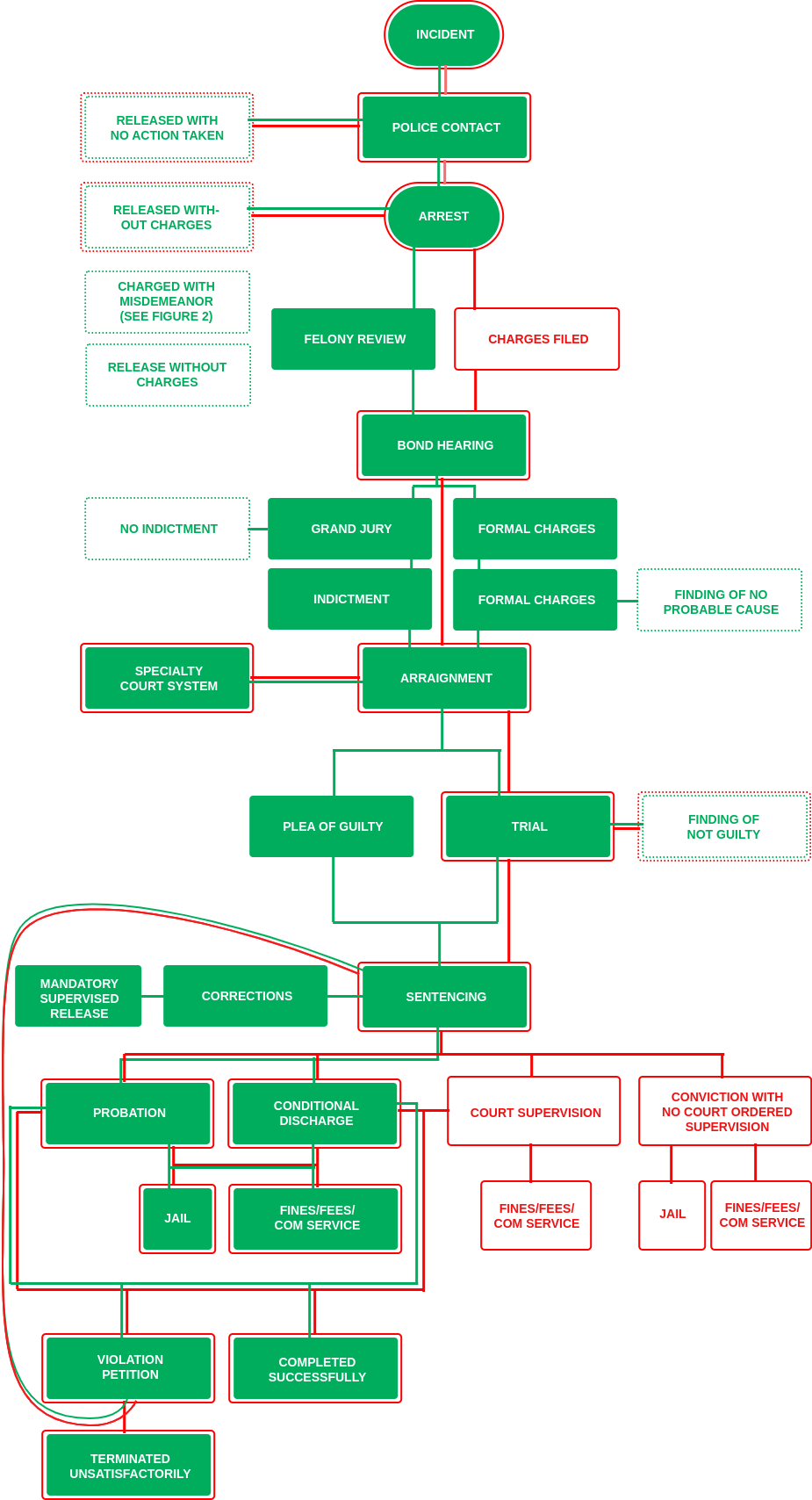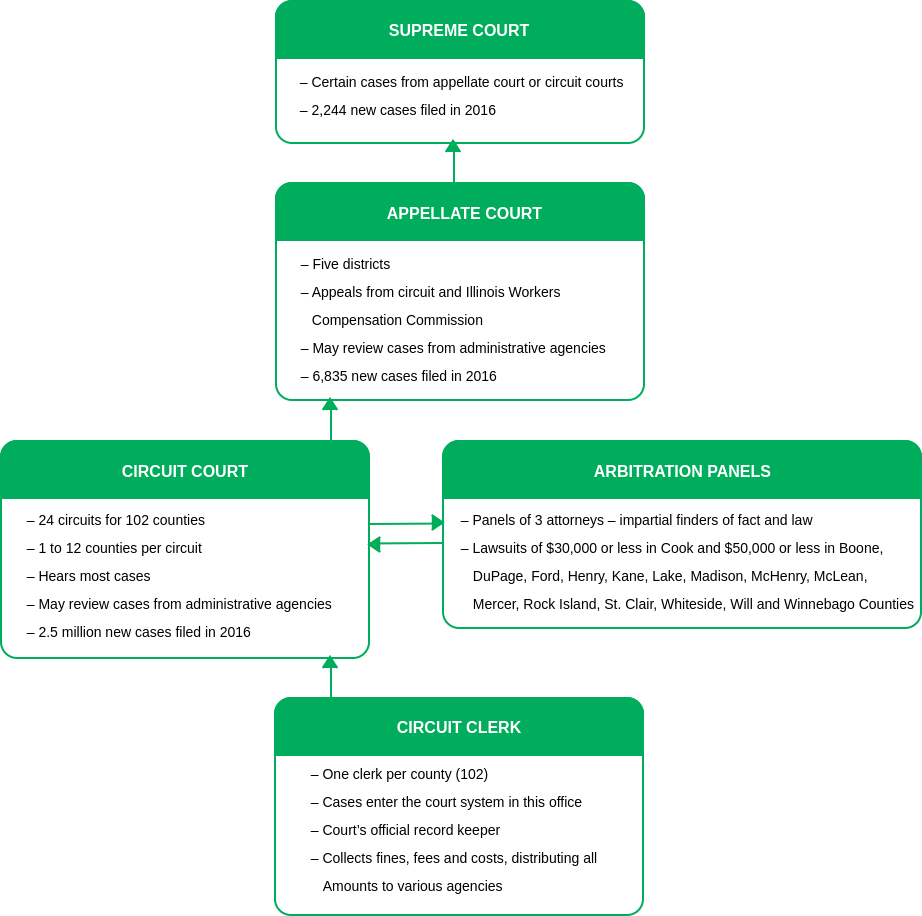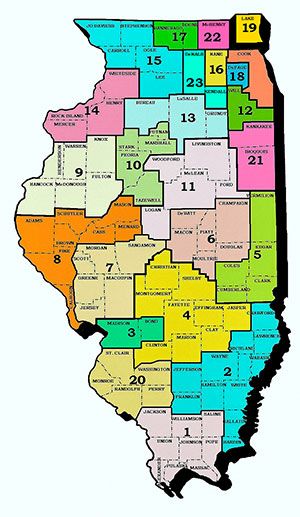Understanding Illinois' Criminal Justice System
 The Illinois Supreme Court Building Courtesy of Alanscottwalker
The Illinois Supreme Court Building Courtesy of Alanscottwalker
The Illinois Criminal Justice System is comprised of statewide authorities and independently run county criminal justice systems in each of Illinois’ 102 counties.
The Administrative Office of the Illinois Courts oversees probation and court services, while the Illinois Department of Corrections oversees state prisons and offenders on supervised release.
Meanwhile the counties are comprised of state and local entities such as:
- Law enforcement Agencies
- State police
- County sheriff’s
- Municipal police
- University and collegiate police
- Additional supplementary law enforcement agencies
- Emergency service organizations
- Crisis intervention
- Residential placement
- Employment
- Counseling
- Society re-entry
- Additional supplementary agencies
- Records and Services
- Circuit clerks
- County probation department
- County court services department
- Court and legal services
- Judges
- State attorneys
- Public defenders
- Private attorneys
- Illinois Department of Corrections
- Incarcerations
- County jails
- Municipal lock-ups
chronology of a felony and misdemeanor arrest
Flowchart of the general adult misdemeanor criminal process in Illinois
Flowchart of the general adult felony criminal process in Illinois

Illinois has five classes of felony and three classes of misdemeanor. Felonies, which start at Class 4 and escalate to Class X, are serious crimes with harsh punishments that often involve jail time. Misdemeanors can be severe crimes as well, but are often reserved for minor or petty crime where no other person was directly harmed.
Felonies:
Class X Felonies are the most serious type of crime in Illinois, and include crimes like murder, aggravated sexual assault, methamphetamine manufacturing, armed robbery, terrorism, treason, and more. Punishments for a Class X felony begin at between six and 30 years in a state prison, a fine of up to $25,000, and additional penalties dependant on the nature of the crime.
Class 1 Felonies are very serious in Illinois, and includes crimes such as sexual assault, possession of heroin, cocaine, or opioids, theft of value between $10,000 and $100,000, cannabis trafficking, second degree murder, promoting juvenile prostitution, firearm trafficking, and human trafficking. Penalties for this type of felony begin at between four and 15 years in a state prison, up to $25,000 in fines, and additional punishments based on the nature of the crime.
Class 2 Felonies are serious crimes in Illinois, and include arson, burglary, possession of a stolen gun, unlawful cannabis manufacturing, kidnapping, theft of over $500, child photography by a sex offender, bid rotating, bribery, abuse of a corpse, inducement to commit suicide, ritual mutilation, vehicle theft conspiracy, and more. The penalties for this type of felony begin at between three and seven years in state prison, fines of up to $25,000, and additional punishments based on the nature of the crime.
Class 3 Felonies are serious crimes in Illinois, and include aggravated battery, theft of property valued between $300 to $2,000, criminal abortion, forgery, syndicated gambling, involuntary manslaughter, bomb threats, perjury, aggravated stalking, intimidation, incest, criminal fortification of a residence or building, bid rigging, advocating overthrow of government, and more. Penalties for a Class 3 Felony start at between two and five years in state prison, up to $25,000 in fines, and more depending on the nature of the crime.
Class 4 Felonies are the least serious type of felony in Illinois, and include felony DUIs, assault, stalking, installation or sale of a false fire alarm, looting, mob action, financial exploitation of the elderly or disabled, aiding and abetting child abduction, luring of a minor, unlawful restraint, hate crime, bigamy, draft card mutilation, sexual conduct or contact with an animal, criminal sexual abuse, unlawful stringing of birds, and more. Penalties for this type of crime start at one year in prison,up to $25,000 in fines, and additional penalties depending on the nature of the crime.
Misdemeanors: Generally, misdemeanors in Illinois have a maximum jail time of 364 days. Multiple misdemeanors of the same crime can result in the charge becoming a felony.
Class A Misdemeanors are the most serious type of misdemeanor in Illinois. They include battery, criminal damage to property, DUIs, endangering the life or health of a child, interfering with the reporting of domestic violence, patronizing a prostitute, possession of drug paraphernalia, prostitution, public indecency, resisting or obstructing a police officer, retail theft, violation of an Order of Protection, and more. They can be punished with imprisonment of up to 12 months. They are also punished by a fine of up to $2,500.
Class B Misdemeanors are a serious type of misdemeanor in Illinois. They include computer tampering, harassment by telephone, littering, obstruction of service processes, window peeking of peeping tomming, theft from coin-operated machines, interference with emergency communications, failure to report hazing, and more. They can be punished with imprisonment of up to six months. They are also punished by a fine of up to $1,500.
Class C Misdemeanors are the least serious type of misdemeanor in Illinois. They include possession of marijuana in an amount of less than 2.5 grams, educational intimidation, disorderly conduct at a funeral, improper use of registration, unlawful sale of a public transit ticket, pretending to be a parent for the purpose of obtaining a tattoo or piercing for a minor, disorderly conduct, assault, and more. They can be punished with imprisonment of up to 30 days. They are also punished by a fine of up to $1500.
McDonald v Chicago was a 2010 case where handgun rights in Chicago were challenged.
How the ILLINOIS Courts are Organized
The path a case may follow in the process from start to finish can be complicated. The diagram, to the right, demonstrates, in general terms, how cases proceed through the state court system.

”In cases from the Circuit Court where the death penalty is involved, state law allows for a direct appeal to the Supreme Court.”
Per Article VI, named the Judicial Article of the Illinois Constitution of 1970, Illinois has a three tier judiciary structure. These are the Supreme Court, the Appellate Court, and the Circuit Court.

-
The Supreme Court of Illinois is the highest court in the State. Cases are channeled to the Supreme Court from the Appellate Court, but in cases from the Circuit Court where the death penalty is involved, state law allows an appeal to the Supreme Court directly. Additionally, the Supreme Court is allowed to pass rules that allow for additional direct appeals. More powers of the Supreme Court include determining the ability of the Governor to serve in office, and exclusive jurisdiction in matters that involve legislative redistricting. The Supreme Court has seven justices. Three represent the First Appellate Judicial District (Cook County), while the other four represent the other four appellate judicial districts in the state. A majority vote of four is required to decide a case.
-
The Appellate Courts are divided into five Judicial Districts. Cook County alone is the first district, while the rest of the state makes up the other four. The Appellate Court affirms the trial court decision if it finds there has been no error committed in the application of the law, or if the error was so minimal that it made little difference in the outcome of the trial. The court may reverse the trial court decision or remand the case for a new trial if there has been a substantive error in the application of the law. When this happens, the case is sent back to the circuit court it originated at for further action.
-
The Circuit Court is divided into the 23 judicial circuits of Illinois. These courts are also known as trial courts. The circuit court is a court of general jurisdiction, which means it has original jurisdiction in all matters except those in which the Supreme Court of Illinois has original jurisdiction. The trial courts hear a wide variety of both civil and criminal cases.
There are two types of judges in a circuit court.
- Circuit Judges are elected to six year terms, after which they must run for retention. The circuit judges elect a chief judge, who provides administrative guidance to the circuit.
- Associate Judges are appointed based on their merit by circuit judges ever four years. They hear all types of cases baring felonies, for which they must receive authorization from the Supreme Court of Illinois.
Illinois’ current court system has been unified since 1964
The original courts had overlapping jurisdiction, yet all operated independently. They had a circuit court with statewide jurisdiction in all cases and some appellate power. There was a superior court in Cook County with concurrent jurisdiction with a circuit court in the same. The criminal court in cook county also had concurrent jurisdiction with the circuit court, but was limited to criminal cases. Each county had its own court with special jurisdiction that overlaps with the circuit courts jurisdiction. There were also probate courts in some counties, statutory municipal courts, city courts, town courts, and village courts, all with jurisdiction that overlapped the jurisdiction of the Cook County Circuit Court.
